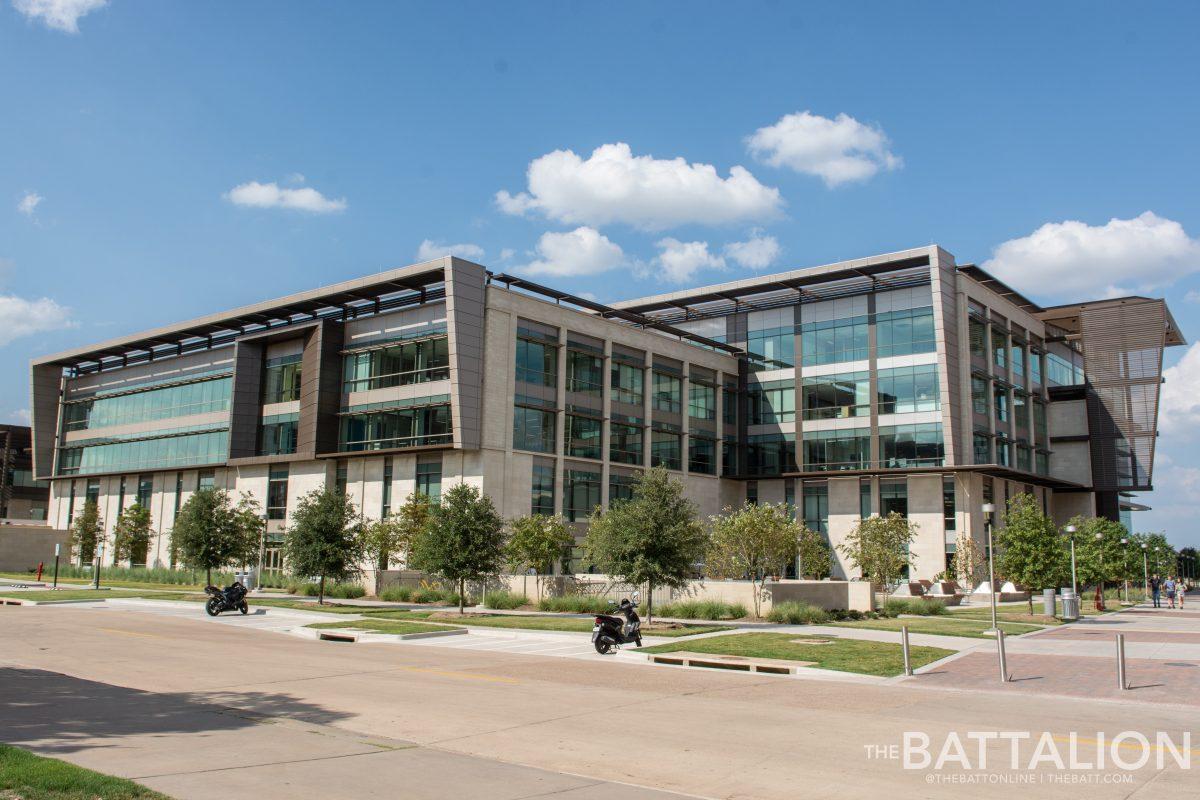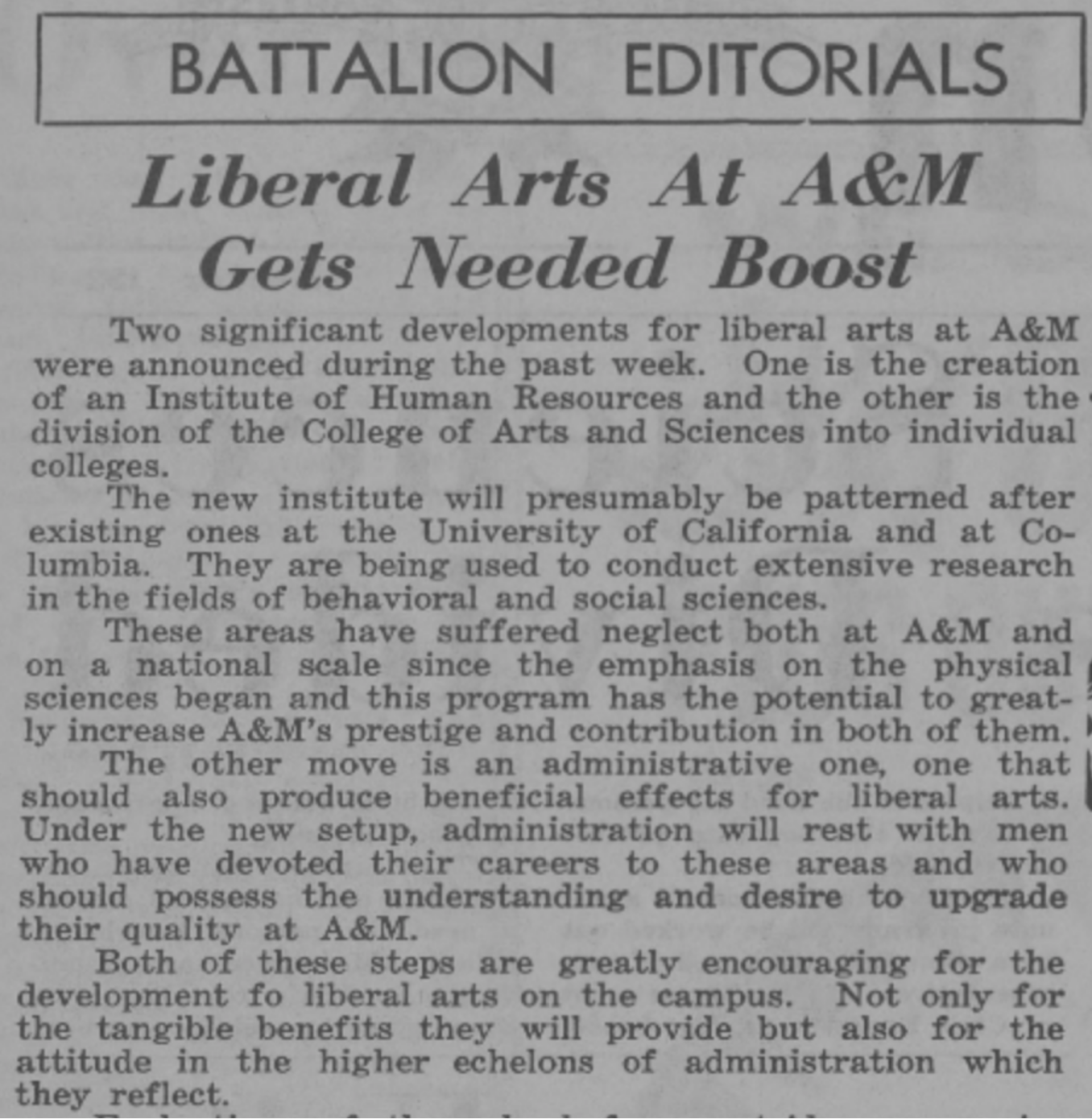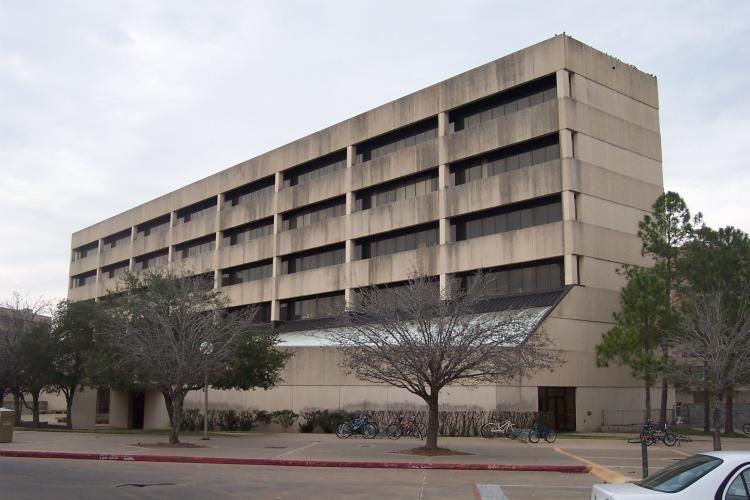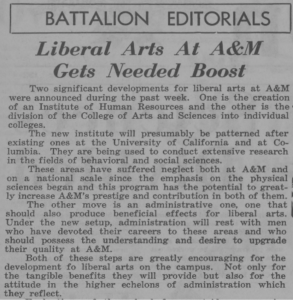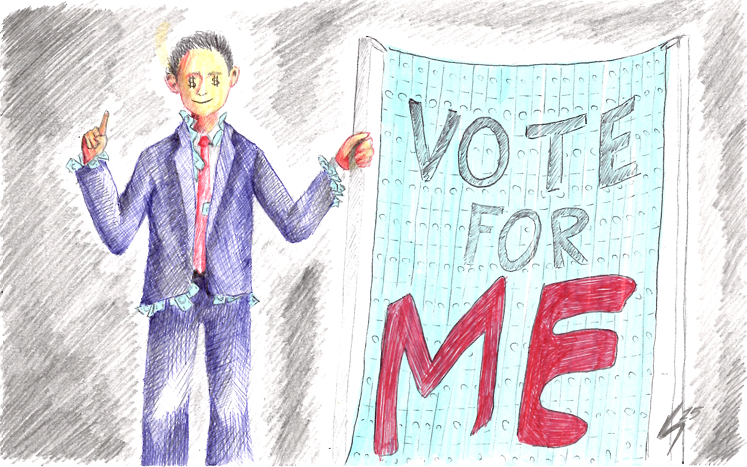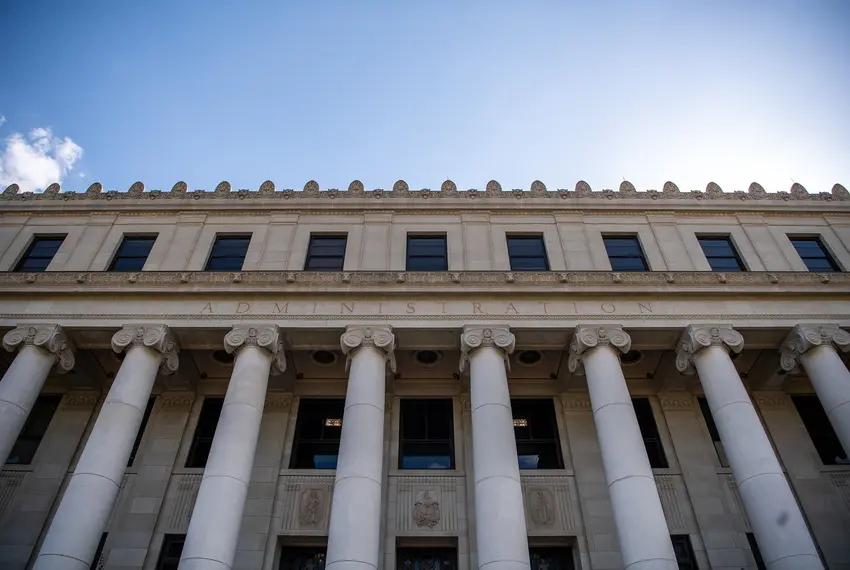What do a guy who studies rocks, a dude who writes novels and a mad scientist who mixes chemicals have in common? If you quizzically said, “nothing,” then you win bragging rights. (I’m a broke college student with nothing to give you).
For those who are confused, welcome to the new world of more than 14,000 Aggies. On Dec. 14, 2021, Texas A&M President M. Katherine Banks announced the colleges of Geosciences, Liberal Arts and Science would be consolidated into a new College of Arts and Science based on the report written by MGT Consulting of America.
Banks’ decision is puzzling for a few reasons. First, it is based on a recommendation from a consulting company currently under criminal investigation — ironically for mismanagement of school funds — in Colorado, but let’s give Banks the benefit of the doubt since this development is relatively recent. What’s worse is that Banks’ attempt to grow our arts and sciences programs will ultimately hinder their growth. All we need to do is look at A&M’s history, other universities’ successes and our fellow Aggies’ concerns.
History
Consider first that A&M had a College of Arts and Science in the past. According to an old newspaper from, yours truly, The Battalion on July 15, 1965, the university split its old College of Arts and Science into what we now know as Liberal Arts and Science. The College of Geosciences opened in October of the same year. This reorganization was ordered to “strengthen offerings in both colleges and allow proper emphasis to be placed in each area.”
Now, these colleges are being combined to reform the College of Arts and Science, an institution students at the time saw to be ineffective. The Battalion’s editorial staff at the time said the social and behavioral sciences “suffered neglect both at A&M and on a national scale since the emphasis on physical science began.”
Of course, those words were written over 50 years ago by the voice of a very different student body. Banks wouldn’t have been a student in Aggieland, let alone its president. The A&M of the 1960s was in a far different situation than what we face today. At least, that’s what one would generally think.
One of Banks’ concerns per the seminal Vision 2020 plan is that A&M will “never be seen as a premier institution nationally without a far stronger letters, arts and sciences program.” But, former A&M President James Earl Rudder’s administration had the same concern, hence why the old College of Arts and Sciences was reorganized.
In fact, the benefits of that division are still visible today. Geosciences students can conduct research in radiogenic isotopes. Anthropology students can roleplay Indiana Jones at undergraduate excavations. Karen Wooley, Ph.D., of the chemistry department won the SEC Professor of the Year award in 2021 for her research and mentorship. (She was even featured in an advertisement that played during every SEC football game).
Sure, consolidating the colleges would cut down administrative costs. You’d have two fewer deans to pay, only one system and more overlap between faculty. However, the three colleges’ abilities to adequately serve their respective students’ unique needs is a small price to pay in the grand scheme.
Think of it like this — Texas, California and Maine all have different state governments. Would combining them into one megastate save money? Yes. There would be two fewer legislatures, two fewer governors and, in general, fewer government entities. However, Texas has far different needs than California. The same can be said for the colleges of Liberal Arts, Science and Geosciences.
Each department’s individual successes alone warrant their own administration. However, if we look at our neighbors, we also see that the colleges being separate is not the problem.
Other universities
I already know what I’m about to say will be unpopular, and the redass part of me already hates it. I’m going to ask everyone to set aside our rivalry with the University of Texas, or UT. (And no, as much as I want to, I will not be referring to them as anything else). I’m not saying it’s a better school than A&M — I’m an Aggie for a reason. However, let’s take a look at how the U.S. News & World Report ranks UT versus A&M.
For context, UT has separate colleges of Liberal Arts, Natural Sciences and Geosciences like A&M before the change occurs in September. For graduate programs in humanities, UT was ranked 19th, 17th and 11th in political science, English and history, respectively. A&M trailed at 28th, 73rd and 67th in the same respective categories. In geosciences, or earth science, UT is a national leader at seventh place compared to A&M’s 31st.
Now, one could look at these numbers and argue they’re the reason Aggieland needs radical reorganization. However, our rival’s national recognition clearly demonstrates that the lack of unity between liberal arts, science and geosciences is not the reason why A&M isn’t well known for its prowess outside of engineering.
Ignoring teaching staff and curriculum, the divide in A&M’s attention is painfully apparent in the stratification of its facilities. In my time as an engineer, my only experience with the College of Science has been in Blocker and Heldenfels, two crusty old buildings with steep stairs that steal the breath from any Aggie who dares climb them. The Interdisciplinary Life Sciences Building is nice, but it’s rarely used for classes. Geosciences fares a little better with the towering Oceanography & Meteorology Building and state-of-the-art weather labs. Liberal arts lays claim to the relatively new Liberal Arts and Humanities building.
None of these structures compare to the opulent masterpiece that is the Zachry Engineering Education Complex. After a $228 million renovation and a goal to have 25,000 engineers by 2025, it’s clear where the university’s focus lies. Many of these endeavors are supported by former students’ generous donations, but without equal investment into other programs, A&M will stagnate as an engineering-first school rather than the well-rounded powerhouse Banks imagines.
Students’ concerns
What is often most overlooked when balancing budgets, planning logistics and fighting PR nightmares is how a decision will affect students. Banks took many student and faculty opinions into consideration before finalizing which MGT recommendations she accepted. However, many Aggies like environmental geosciences junior Kate Faris are still worried about the future.
“Some of my concerns with merging with some larger colleges is losing that element of community,” Faris said. “Having that tight-knit community specifically within an education setting has been so helpful.”
The academic realignment would possibly preserve different academic departments to still preserve that community, but merging into a bigger college presented Faris with other administrative fears.
“Advising in the College of Geosciences is amazing,” Faris said. “You have the same advisor all four years.”
With the merge into a larger institution that carries the potential for more advising overlap, Faris said she is worried the one-on-one connection will be lost. With the administrative shifts, there are also concerns some research programs may be lost.
“For students, one of the biggest research programs on our campus is the International Ocean Discovery Program, or IODP,” Faris said. “Losing a lot of those administrators that have been with IODP for years … is going to be a big turnoff for them.”
Most concerningly, Banks’ decision to consolidate the College of Geosciences may have the opposite effect as intended.
“If I had just seen a College of Arts and Sciences, [A&M] wouldn’t have been as set apart from other universities,” Faris said.
Instead of creating a “critical mass,” these departments would slowly lose their identityies and appeal to future Aggies.
While many of Fairs’ concerns are admittedly speculative, you’d be hard pressed to find any student from the to-be consolidated colleges who is happy about the academic realignment. Many of the 14,000 students affected share Faris’s concerns, and they deserve to have some of these questions addressed.
Compounding these concerns is a recent email ordering several liberal arts departments to vacate their historic home in the Academic Building. Hispanic studies, sociology, the Race and Ethnic Studies Institute and more will soon be without a home and still have no details as to where they will be relocated.
Students rightfully feel marginalized and ignored in favor of other programs, namely engineering. The Banks administration has done little to provide a concrete plan for the affected departments, or if they have, it has been poorly communicated. Because these changes aren’t accompanied by additional steps, students and faculty — even including the interim dean — are left flailing in the dark.
University administrators have an obligation to provide more communication with Aggies who are significantly affected by their decisions to reorganize A&M. If the Banks administration continues to shake up the university without engaging the community, they fail to uphold A&M’s Core Values of Leadership and Selfless Service. Because if the people who you “lead” are in the dark and upset, their service isn’t selfless.
Where do we go from here?
Looking back at our history and past successes, it’s clear that creating three distinct colleges who have three unique missions has been beneficial to the university’s image, created a better society and effectively served generations of students.
Unfortunately, it seems as if Aggies will wear burnt orange before Banks changes her mind and halts the academic realignment. At this point, it’s almost inevitable that the successor to the College of Arts and Sciences will be reborn to serve a far larger and more diverse student body.
Some of the recommendations from the MGT report are good, but the consolidation of three significant colleges is not one of them. The equivalent of an entire section of Kyle Field cried out in opposition, only to be met with silence. Leaving fellow Aggies feeling confused and alone is unacceptable.
The Banks administration needs to reach out and engage with students more, perhaps by hosting a town hall or continuing to accept feedback regarding the upcoming changes. Our president needs to do something to assuage fears and be directly accountable to the students she leads.
We’ll wait for our leaders to show us the Respect, Excellence, Leadership, Loyalty, Integrity and Selfless Service we expect. In the meantime, do not go gentle into one college.
Caleb Powell is a biomedical engineering junior and opinion editor for The Battalion.
Opinion: Consolidating colleges will yield disaster
January 25, 2022
1
Donate to The Battalion
$1865
$5000
Contributed
Our Goal
Your donation will support the student journalists of Texas A&M University - College Station. Your contribution will allow us to purchase equipment and cover our annual website hosting costs, in addition to paying freelance staffers for their work, travel costs for coverage and more!
More to Discover




